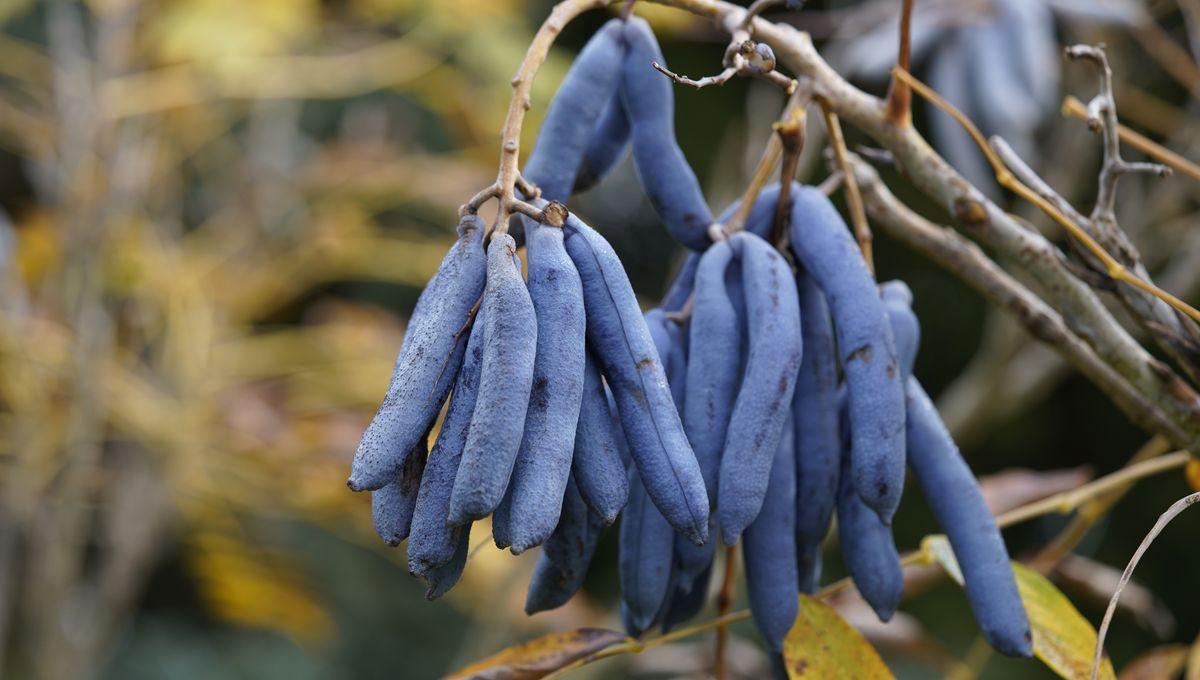“Dead Men’s Fingers” Might Just Be The Strangest Fruit On The Planet

“Dead Men’s Fingers” Might Just Be The Strangest Fruit On The Planet
If you only ever saw the leaves or flowers of the Decaisnea fargesii shrub, you might not be tempted to give it a second glance – they look a lot like plenty of other leaves and flowers do. But come the fall, something happens to this plant that you’d be hard-pressed to miss. It grows dead men’s fingers.
The rest of this article is behind a paywall. Please sign in or subscribe to access the full content. Okay, so they aren’t actually dead men’s fingers (although please credit us when you use the idea of plants that grow the deceased’s digits in your horror movie script), but it’s easy to see where the fruit of D. fargesii gets the nickname from. They’re gray-blue, chunky, with constrictions resembling the creases on a finger, and come to a point that, if you squint your eyes a bit or take off your glasses, might look a bit like a well-sharpened fingernail. This unusual plant was first described in the scientific literature in 1892 by French botanist Adrien René Franchet, who wrote in the Journal de Botanique that its fruit was “a beautiful blue”. The dead men’s fingers comparison would have to wait though; Franchet said that the shape, color, and constrictions on the fruit gave it “the appearance of large blue caterpillars hanging from branches” rather than something spooky. Franchet was sent the sample of D. fargesii by the French Catholic missionary Paul Guillaume Farges, and the plant was named in his honor. Farges was quite the prolific plant collector, acquiring nearly 4,000 species whilst stationed in Sichuan, China. It’s there – as well as Tibet and Nepal – that dead men’s fingers still grow today in the temperate climate, ripening just in time for the spooky season in October. Another nickname for D. fargesii’s bizarre bean-like pods is the blue sausage fruit, which sounds at least a bit more appetizing than dead fingers. It begs the question though: can you actually eat it? Sort of. Open up the fruit of D. fargesii and you’ll find black watermelon-like seeds contained within a clear pulp. It’s only the pulp that’s edible, but disappointingly, it doesn’t taste like sausages. Yummy, yummy pulp. Image credit: guentermanaus/Shutterstock.com According to a blog post from Daniel Mosquin, Research Manager at the University of British Columbia’s Botanical Garden and Centre For Plant Research, the fruit is “not unpleasant, but bland. The texture is more interesting – akin to jelly.” Wolfgang Stuppy, a seed morphologist at the Royal Botanic Gardens, Kew, gives it a more positive review: “I found its flavour very pleasant and subtle, mainly sweet, perhaps with a hint of melon or cucumber.” We can’t say we’re convinced – but would you be willing to try dead men’s fingers?What are dead men’s fingers?
Can you eat them?



